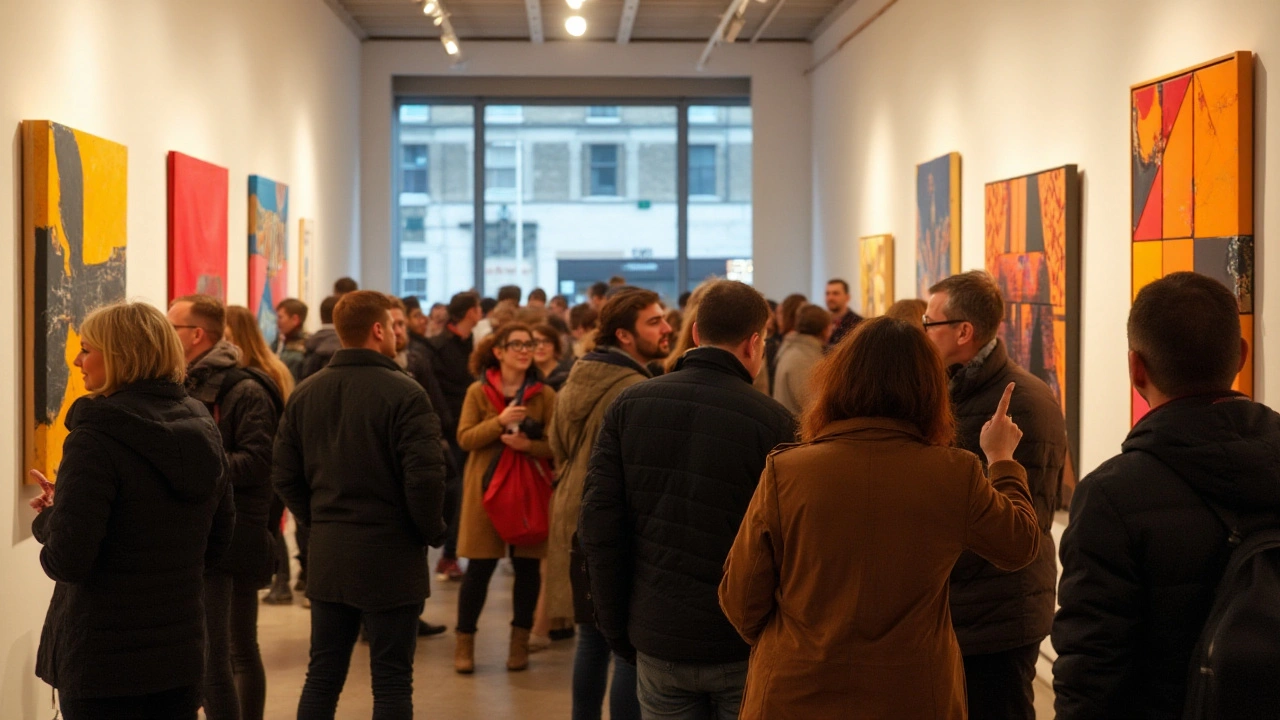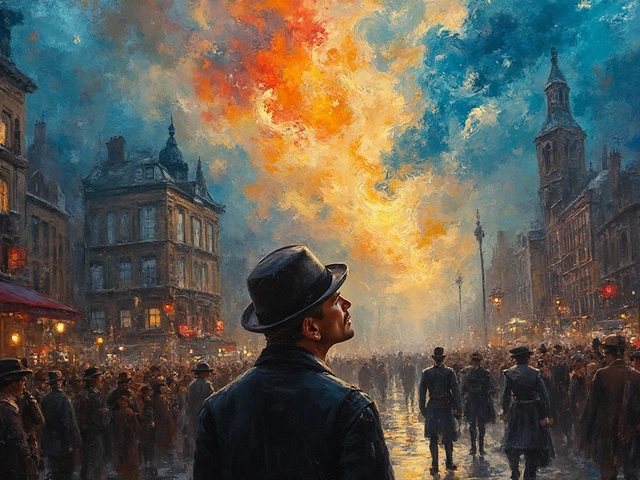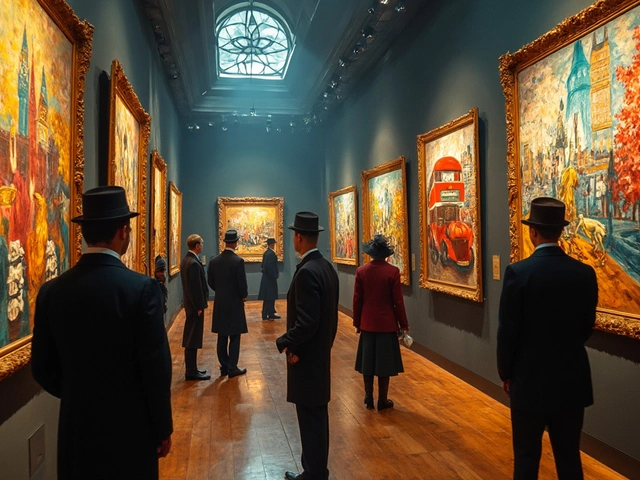In the vibrant landscape of modern art, Constructivism stands as a compelling force that reshaped artistic endeavors in the early 20th century. Born from the aftermath of World War I, this movement sought to marry art with social and technological innovation. Unlike its predecessors, Constructivism didn't dwell in the past; it gazed into the future, championing practicality and functionality over decorative beauty.
Delving into the origins of Constructivism reveals a profound connection to the socio-political climate of its time. Emerging from the innovative minds of Russian avant-garde artists, it fused art with everyday life, heralding a new chapter where art served as both a cultural and functional asset. But what truly sets this movement apart is its steadfast commitment to breaking boundaries and exploring new horizons.
Origins and Influences
The revolutionary wave of Constructivism Art took root in the early 20th century, at a time when the world was witnessing unprecedented social and political upheaval. This art movement arose from the embers of the Russian Revolution, finding a fertile ground in a society yearning for change and innovation. It was deeply influenced by the industrial boom and the emerging technology of the period, blending seamlessly with the ideas of modernism and progress. The Constructivists sought to create artworks that were not just visually striking but also served a purpose beyond aesthetics. To them, art was an integral part of daily life, much like the machines that were rapidly reshaping their world.
The foundations of Constructivism can be traced back to figures like Vladimir Tatlin and Aleksandr Rodchenko, who were among the pioneers in redefining art's role in society. They abandoned traditional artistic methods and instead embraced materials like glass, steel, and plastic, which were emblematic of industrial progress. Their innovations paved the way for a form of art that was less about representation and more about construction and function. In this way, art became a political and social tool capable of influencing and inspiring radical change, embodying the hopes and aspirations of a new socialist society.
Constructivism was part of a larger avant-garde movement that stretched beyond Russia, influencing various other art forms across Europe. It shared similarities with movements like De Stijl and Bauhaus, all of which promoted a minimalist aesthetic and a belief in the transformative power of art and design. These movements shared a vision of integration between art, technology, and society, aiming to eliminate the division between artist and artisan. The Constructivists believed that artists could play a crucial role in shaping the industrialized society of the future by designing everything from propaganda posters to functional objects and architecture.
“From the outset, the Constructivists were enamored with the notion that art had to be reconstructed for the future, one where efficiency and functionality were prized above all,” said Alexei Gan, a notable theorist of the movement.
The influences that shaped Constructivism were not solely economic or technological but also deeply philosophical. Artists drew inspiration from movements such as Futurism, which celebrated speed, dynamism, and the machine age. Futurism's fascination with technology and its impact on human life resonated deeply with many Constructivists, who sought to further explore these themes through their works. In embracing these ideas, Constructivism positioned itself at the intersection of art and life, blurring the lines in a way that had never been seen before.
In retrospect, the origins and influences of Constructivism reveal a dynamic interchange between art and the socio-political landscape of the time. By embedding itself within the fabric of daily life, Constructivism challenged traditional notions of art and sought to redefine its purpose. As such, it stands today not only as an art movement but as a historical testament to the transformative power of creativity and innovation during a period of profound change.
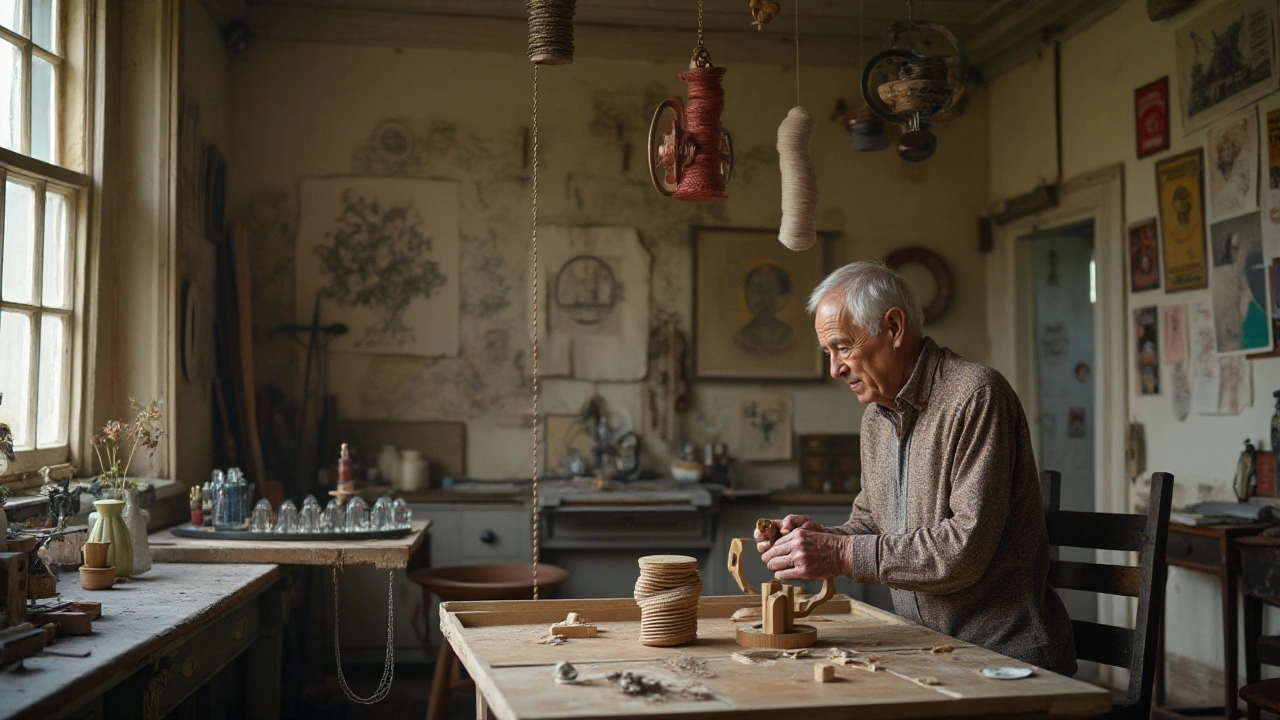
Key Characteristics
At the heart of Constructivism Art lies a distinctive blend of artistic theory and application, breaking away from traditional notions of art being merely for aesthetic pleasure. This movement emphasized that art must serve a greater purpose beyond beauty, venturing into realms where art intersects with industry, technology, and social needs. One of the defining attributes of Constructivism was its profound use of geometric forms, often presented with bold lines and clear shapes. These elements were not randomly chosen; instead, they were meticulously selected to reflect the era's push towards modernization and innovation.
The use of new materials was another hallmark of Constructivism, as artists began incorporating industrial materials such as glass, metal, and plastic into their works. This shift in material usage was a direct departure from the traditional paints and canvases, underscoring the movement's alignment with the industrial age. By utilizing materials associated with industry and technology, Constructivists were not only creating art but also making a statement about the world around them. They believed that art should be an active participant in daily life, influencing the environments in which people live and work.
Functionality played a crucial role in shaping Constructivist works. This movement embraced the motto that art must be functional; ornaments and embellishments were eschewed in favor of design and architecture that offered practical benefits. It was in this spirit that Vladimir Tatlin, a leading figure in the movement, proposed his iconic yet unrealized project, the Monument to the Third International, which aimed to be a functional building reflecting the dynamic and revolutionary spirit of the time. His vision encompassed the ideals of Constructivism, focusing on the fusion of art and utility as a response to societal needs.
El Lissitzky, another luminary of Constructivism, once remarked, "In our time, art has ceased to be a human body warmed by the sun; in the future, that sun will be a blazing wheel as well as a spiral." His words captured the essence of the movement; art was no longer isolated from the mechanical progress of humanity but intrinsically linked to it. Lissitzky's emphasis on technology and change meant that his works, like those of his peers, often employed visual techniques that predicted future developments in design and communication.
Moreover, collaboration across disciplines was encouraged within the Constructivist ideology, leading to a fusion of architecture, graphic design, and theater. This interdisciplinary approach allowed Constructivism to transcend traditional art boundaries and influence various facets of modern culture. Artists worked closely with engineers and architects, creating a dialogue between art and science. This cooperative spirit produced works that were not only visually striking but also intellectually stimulating, promoting a new way of thinking about the relationship between artist, society, and technology.

Notable Artists
At the heart of the constructivism art movement are artists whose visions and groundbreaking works have left an indelible mark on the art world. One such pivotal figure is Vladimir Tatlin, often hailed as one of the founding fathers of this art form. His most famous work, the 'Monument to the Third International' or Tatlin's Tower, was never built yet remains an iconic symbol of Constructivism's bold aspirations. This spiraling, futuristic structure captured the movement's technological and utopian vision, aiming to represent modernity and progress. Tatlin's work emphasized the aesthetic utility, believing that art should serve a practical and societal purpose.
Another indispensable artist in the constructivist movement is Alexandra Exter, whose multidimensional works breathed new life into stage design and art. Her career evolved through painting and design, where she embraced the dynamic energy of Constructivism, using vibrant colors and geometric forms to express the movement's core ideals. Exter was especially known for her collaborations with the theater, where she applied constructivist concepts to create sets that were more than just backdrops—they were integral, interactive elements of the performance. This innovative marriage of art forms showcased Exter's pioneering spirit, a true testament to the movement's versatile approach.
The duo of Naum Gabo and Antoine Pevsner also played crucial roles in shaping the constructivist narrative. Both brothers contributed to the 'Realistic Manifesto,' which articulated key tenets of Constructivism, urging artists to abandon imitation and embrace abstraction rooted in real-world materials like steel and glass. Their works explored the intersection of art, technology, and industry. Gabo's 'Column' and Pevsner's intricate sculptures are exemplary of their commitment to these ideals, utilizing modern industrial materials to craft structures that appeared weightless and dynamically poised. These works underline the movement's dedication to harmonizing art and societal progress.
As Naum Gabo once remarked, "We appreciate the new and engage in the art of construction to reveal the beauty of the materials." This quote encapsulates the constructivist ethos, where beauty is found not in ornament but in material and function.
Kazimir Malevich, though primarily associated with Suprematism, also made significant contributions to Constructivism. His radical approach to art, focusing on basic geometric forms, influenced generations of artists and seamlessly blended into the constructivist ideology. Malevich's insistence on pure abstraction was instrumental in defining a segment of the constructivist dialogue, which advocated for simplicity and clarity in art creation. Understanding these artists and their contributions provides invaluable insights into the rich tapestry of modern art movements and highlights the enduring impact of Constructivism.
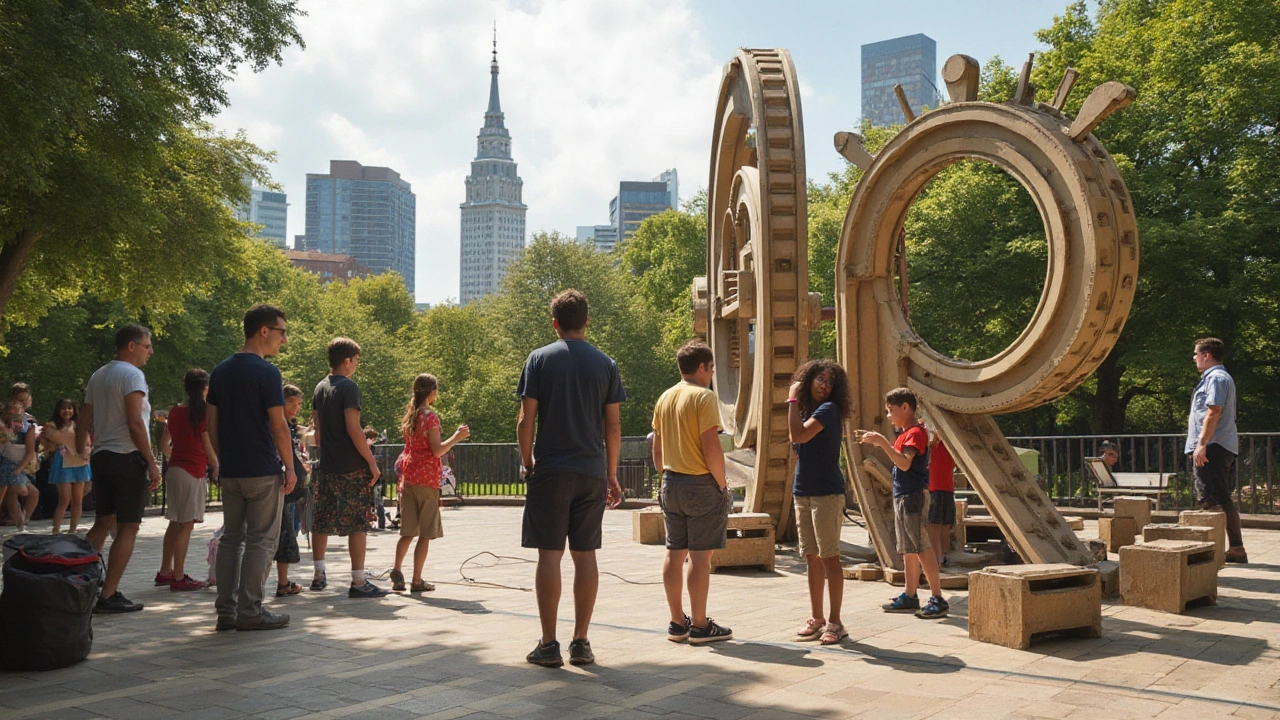
Practical Tips for Beginners
Constructivism art, with its revolutionary spirit, can seem daunting to the uninitiated, but diving into this movement offers an exhilarating artistic journey. First off, as a beginner, it’s important to recognize the core ethos of constructivism art: the marriage of art and functionality. This means you're not just creating for beauty’s sake; your creations have a purpose. Understanding this can be your guiding star as you explore the possibilities this movement offers. Begin by experimenting with industrial materials, like metal or glass, which are staples in constructivist creations and symbolic of its modernist ethos. Instead of relying solely on traditional canvases, let your imagination roam free and consider your work as part of a larger spatial experience.
Next, get inspired by some key practices employed by the pioneers of this movement. Look into collage and photomontage as methods to piece together distinct materials and imagery. These techniques can provide you with new layers of meaning and connections in your artwork. The use of geometric forms is another hallmark of constructivism. Consider how triangles, circles, and lines can form the foundation of your creations. And if you're looking for expert insight, remember the words of famous constructivist artist Naum Gabo, who said,
"Constructive art is not a reflection of a certain social phenomenon but is, like the organism of a plant - a natural phenomenon."His take underscores the movement's roots in natural forms and social relevance, offering an inspiring template for your work.
If you’re eager to delve deeper, consider the balance between abstraction and representation in your projects. Study the interplay of light, shadow, and space, which are crucial to harnessing the depth of this art form. This involves understanding how different forms and structures interact within a space, both physically and symbolically. It’s often about what you remove rather than what you add, nurturing a minimalist approach in design that still adheres to its core message. Keep in mind that mistakes are stepping stones to success. Experiment freely but take notes on what works and what doesn’t, as the learning process in art is cyclical. Embrace the chaos of creativity while striving for the clean lines and efficiency that are trademarks of constructivist pieces.
Furthermore, connecting with communities of like-minded artists can be invaluable. This can be through social media, local art groups, or online forums where you can share your works and get feedback. Observing how other beginners and experienced artists interpret constructivism can broaden your perspective and provide fresh ideas for your creations. Art exhibitions focusing on modern and contemporary art might also offer insights into current trends and historical contexts. Being part of this enriching exchange helps cement your place in the ongoing dialogue that constructivism art continues to inspire today.
Don't shy away from mixing other art forms into your practice. Techniques from graphic design, architecture, or even sculpture can breathe new life into your works. Syncopating between disciplines not only enhances technical skills but also deepens your understanding of art’s impact on society. Introducing new technologies, such as digital rendering, can also be an exciting venture. This allows you to explore endless horizons, pushing the boundaries of what art movement itself represents. It’s a reminder that constructivism is not a static entity but a living narrative you can contribute to through courageous and authentic expression.

